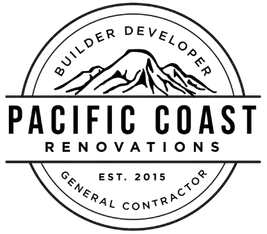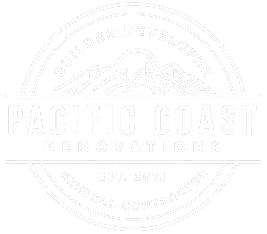Bathroom Remodel Costs
What Homeowners Need to Know Before Starting
Remodeling a bathroom is one of the smartest home upgrades you can make—boosting comfort, energy efficiency, and resale value. But the big question most homeowners have before starting is: How much does a bathroom remodel cost?
Whether you’re updating a dated powder room or transforming your master suite, the cost of a bathroom renovation depends on several key factors: size, scope, materials, labor, and location. This guide will help you understand what drives cost, how to build a smart budget, and what to watch out for during the remodeling process.
Average Bathroom Remodel Costs in 2025
Bathroom remodeling costs vary widely based on the type of remodel, quality of finishes, and any structural changes involved. Here’s a general cost range to help you set expectations:
Remodel Type
Average Cost Range
Local Cost Insights
Based on our experience managing bathroom remodels here in Pierce County, costs can vary quite a bit depending on local conditions. Labor rates in the Tacoma area, material availability, and city permitting requirements all play a role in your final price.
Even within the same neighborhood, prices can shift depending on the scope of work, the age and condition of your home, and how much prep is required before construction begins. Our team has completed hundreds of remodels across Tacoma, Puyallup, Lake Tapps, and Gig Harbor, so we understand the nuances of this market and can give you a realistic estimate that reflects actual local costs—not just national averages.
What Influences Bathroom Remodel Cost?
To budget effectively, it helps to understand the primary cost drivers in a bathroom remodel:
1. Size of the Bathroom
2. Scope of Work
3. Fixtures and Finish Levels
4. Type of Shower or Tub
5. Plumbing and Electrical Work
6. Tile Work
7. Cabinetry and Storage Solutions
8. Permits and Inspections
Most full renovations require permits for plumbing and electrical work. Fees vary by city, typically ranging from $300 to $2,000. Inspections are necessary for code compliance and resale.
Budget Breakdown: How Much Goes Where?
Category
Estimated % of Budget
How to Set a Realistic Bathroom Remodel Budget
Define Your Goals
Do you want a full transformation or just a cosmetic refresh? Are you remodeling for resale, lifestyle, or accessibility? Your goals will shape your budget.
Create a Priorities List
Separate your “must-haves” (like a walk-in shower) from your “nice-to-haves” (like heated floors). This gives you flexibility if you need to adjust during the project.
Build in a Contingency
Plan for the unexpected. Allocate 10–20% of your total budget as a buffer for surprise costs like mold remediation, water damage, or structural upgrades.
Get Multiple Bids
If you’re working with contractors, get at least 2–3 detailed estimates. Compare scope, timelines, materials, and professionalism—not just price.
Ask About Financing Options
Some contractors offer financing plans, which can help you complete your renovation sooner without draining savings. Just be sure to understand the terms.
Hidden Costs That Catch Homeowners Off Guard
Even experienced homeowners can be surprised by unforeseen expenses. Common hidden costs in bathroom remodels include:
- Water damage behind walls or under floors
- Mold or mildew remediation, especially near old tubs and showers
- Plumbing upgrades, if pipes are not up to code or corroded
- Electrical panel work, if new lighting or outlets require more power
- Lead paint or asbestos removal in older homes
- Custom ordering delays, resulting in extended labor timelines
An experienced, licensed contractor will help identify these risks during your initial walkthrough and build allowances into the estimate when appropriate.
Is a Bathroom Remodel Worth the Investment?
Absolutely—when done thoughtfully. According to national data, mid-range bathroom remodels yield an ROI of about 60–70%, depending on your market. But the real value often lies in improved usability, comfort, and long-term durability.
You’ll also likely see savings through water-efficient fixtures, LED lighting, and better insulation, all of which reduce monthly utility bills.
For homeowners planning to sell within a few years, a modernized bathroom can set your listing apart and increase buyer appeal. Clean lines, fresh tile, and new fixtures are high on buyers’ checklists.
Choosing the Right Contractor for Your Bathroom Remodel
Your choice of contractor will directly impact the cost, quality, and experience of your renovation. Here’s how to vet the right pro:
- Check licenses and insurance in your state
- Look for reviews and references from recent clients
- Review portfolios of similar bathroom projects
- Discuss communication expectations up front
- Request a written contract and timeline
Don’t hire based on price alone. A slightly higher bid from a well-reviewed, experienced contractor is often the better long-term value.
Bathroom remodels come with many decisions—but understanding the cost landscape empowers you to plan with clarity and confidence. Whether your budget is $10,000 or $60,000+, success starts with thoughtful planning, clear priorities, and choosing the right professionals.
Focus first on function and longevity, then layer in finishes and style that reflect your taste. A well-executed bathroom renovation will serve your home well for years to come.

